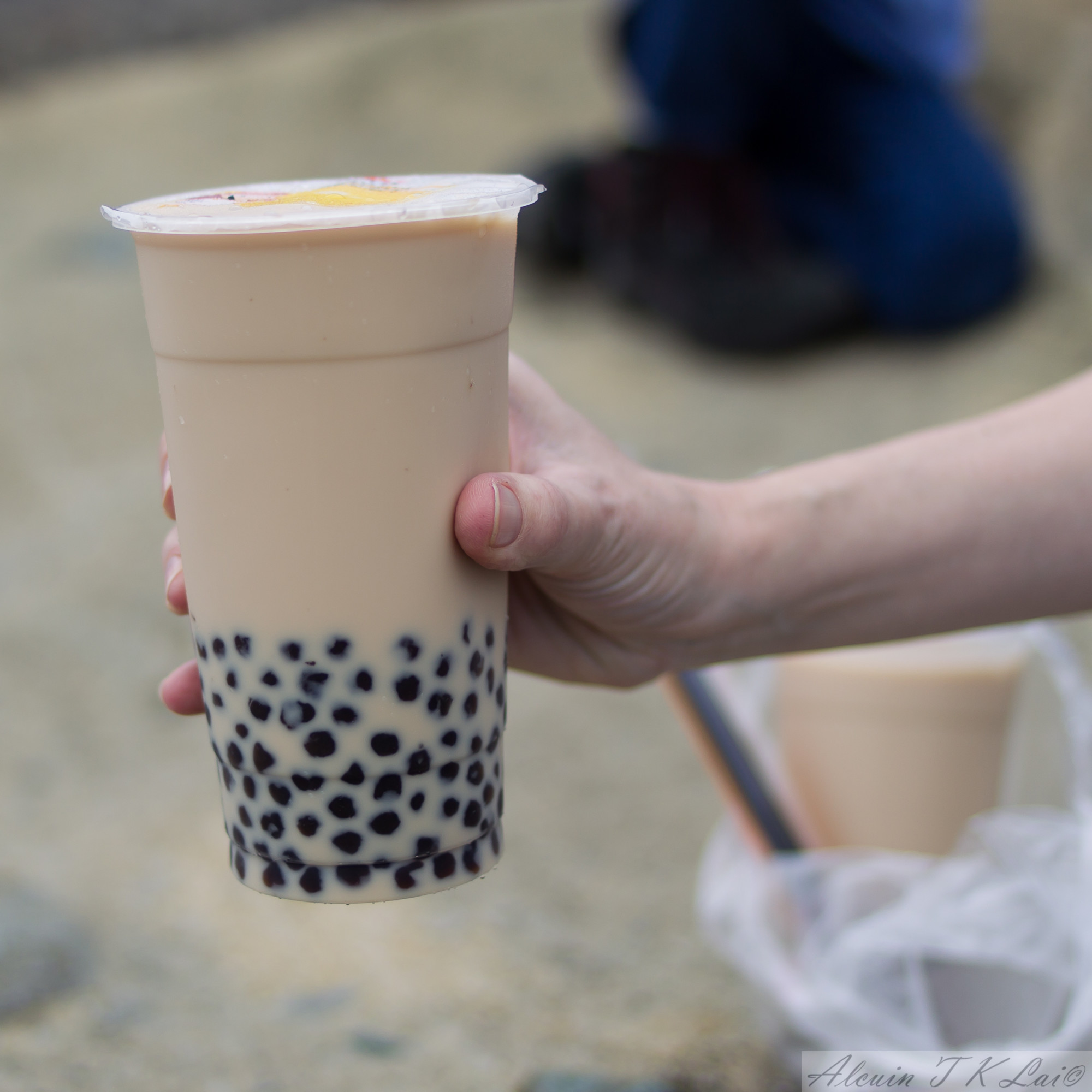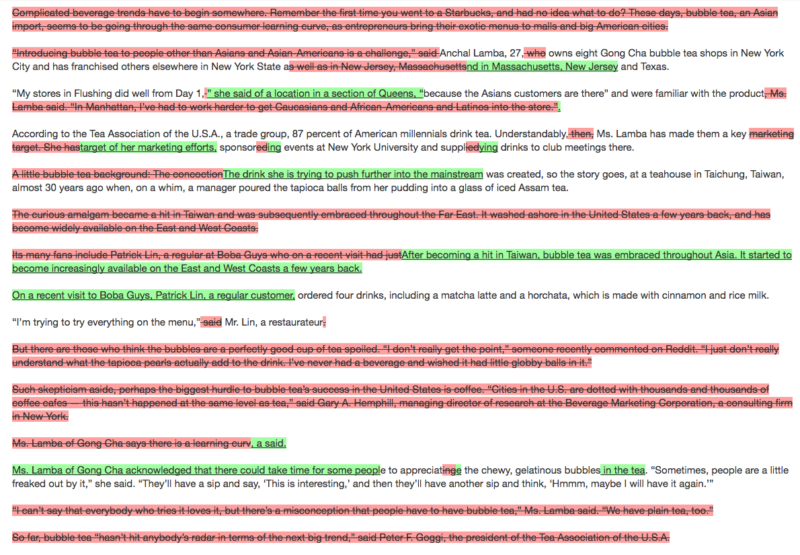On Wednesday night, The New York Times’s business section published a story about the growing number of bubble tea businesses and their struggle to expand in the United States. But, as many have noted, the paper of record thoroughly botched its execution of the feature, including two tone-deaf headlines and an unattributed quote from Reddit.
On Thursday, the title of the story was changed from “The Blobs in Your Tea? They’re Supposed to Be There” to “Bubble Tea, Long a Niche Favorite, Goes Mainstream in the U.S.” and then finally “Bubble Tea Purveyors Continue to Grow Along With Drink’s Popularity.” The article also used awkward phrases such as “exotic menus,” “concoction,” “curious amalgam,” and the deeply unpleasant “globby balls.”
your food blog needs more asian friends pic.twitter.com/q37NQoRCHy
— E. Alex Jung (@e_alexjung) August 17, 2017
“It talked about Asia as ‘the Far East’ and boba ‘washing ashore,’” says Los Angeles Times writer Frank Shyong, who also called the piece “comically late” and “breathtakingly stupid.” “This is the language of an old black and white movie. It just promoted this vision of the mainstream that simply didn’t include Asian people.”
ICYMI: Diversity in newsrooms has been bad for decades and it probably won’t get better: study
The way news organizations title stories is important. In its first two headlines, the Times described bubble tea, also known as pearl milk tea or boba, as a complicated foreign drink not widely popular in the United States or around the world. This despite the fact that bubble tea shops exist in places like Morgantown, West Virginia, Birmingham, Alabama, and Kentwood, Michigan. The parent company of one of the largest chains, ChaTime, is publicly listed in Taiwan with a market cap of $2.9 billion.
The online uproar was so loud online that it led to an editor’s note and extensive revisions. Business editor Ellen Pollock also issued an apology in the Reader Center, which acknowledged that less than a year ago, the paper had called bubble tea “so 2002.” (Disclosure: Pollock worked as a contributing editor on CJR’s most recent print magazine this spring, before she joined the Times.)
do the blobs in your tea outnumber the journalists of color in your newsroom @nytimes https://t.co/TfA531Mr7W
— Wilfred Chan (@wilfredchan) August 17, 2017
Wilfred Chan, a social media editor at Splinter and frequent critic of the media’s lack of diversity, says these mistakes could easily have been avoided if there had been a person of color or someone familiar with the culture nearby. “Journalists of color have been screaming for ages to improve newsroom diversity, not just because we want jobs, but because it would actually make the journalism better. This is one of those really vivid examples where there clearly wasn’t someone in the room who knew what they were doing.”
Shyong, who is a member of the Asian American Journalists Association, was also a mentor of this year’s Voices student program, which recently published a report showing minorities only make up 22 percent of the Times’s newsroom staff, compared to 53 percent of the population of the New York metropolitan area. The diversity report also noted that of the 18 people on the Times’s masthead, only three are people of color.
“I connected it to newsroom diversity [online] because diversity is about creating a mainstream that includes everyone’s perspectives, all colors, all creeds—my perspective, my parents, even the perspective of dozens of people who have never heard of boba,” Shyong says.
You Have Probably Been Eating Blob Tea Wrong Your Whole Life pic.twitter.com/BBiW1wHdBY
— Tech@BF: Sam (@buzzfeedexp) August 17, 2017
Vox digital journalist Bo Hee Kim says she wrote her letter to the corrections desk to try to prevent this from happening again. “I think it’s really important to try to take frustration and make it a productive thing,” Kim says.
Reading the story made Kim remember a potluck in third grade where she brought her mother’s beloved japchae, a Korean noodle dish. “But no one would eat it. Everyone said it looked like worms,” she says. “It was one of the few dishes that was left untouched. I remember feeling this incredible sense of shame.”
To Kim, the Times’s story could have celebrated boba tea’s uniqueness rather than describing it as unappealing, strange, and negative.
“The thing that was so clear to me in this article was that what was being described as the standard normal was not inclusive of how I think of America, which is a country of immigrants continuing to evolve and change the culture,” she says.
TRENDING: Photo behind graphic Charlottesville image recounts near-death experience
Karen K. Ho is a freelance business, culture and media reporter, based in New York. She is also a former Delacorte Fellow at CJR. Follow her on Twitter @karenkho.


